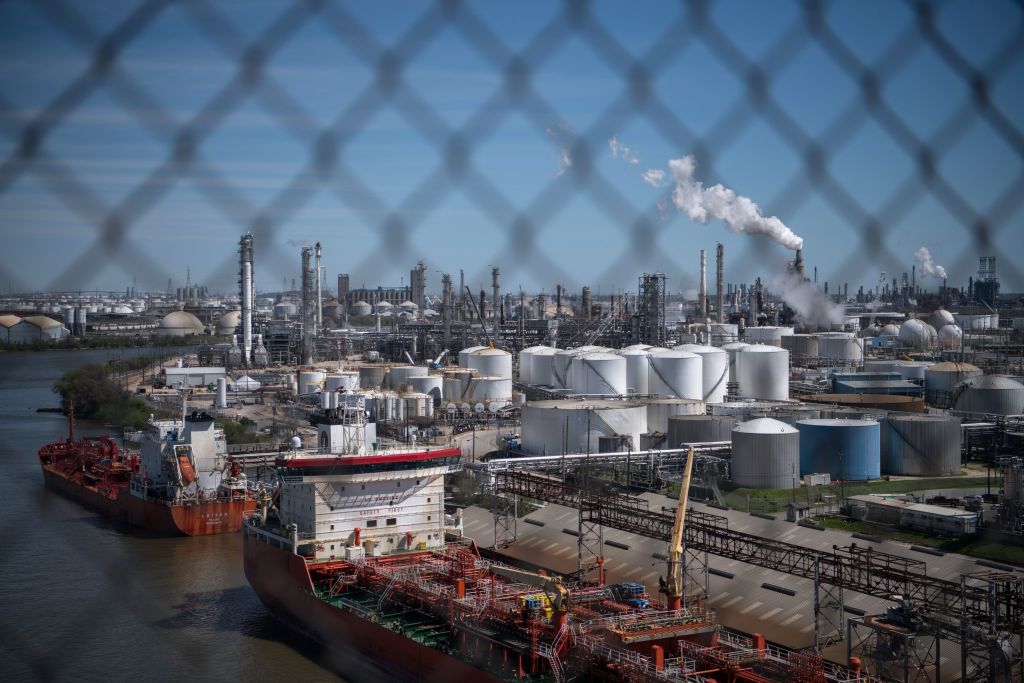Dangerous accidents at chemical facilities are not uncommon: When two chemicals were unintentionally mixed at a processing plant in Atchison, Kansas, in 2016, they produced a stream of chlorine gas and other compounds that sent 140 people in the surrounding area to hospitals. Two years earlier, the accidental release of methyl mercaptan, a toxic compound, killed four workers at a DuPont facility in La Porte, Texas.
Human error, equipment malfunctions, and natural hazards can cause the release of dangerous chemicals threatening the life and health of workers and residents who live close to facilities like these. Chemical companies are required by the Environmental Protection Agency’s Risk Management Plan rule, or RMP rule, to develop programs that help reduce the risk of accidents. There are 10,420 facilities nationwide that are required to submit plans under the rule.
A growing threat to these facilities is coming into focus: climate change. More than 3,200 of these sites are in areas where natural hazards like storm surges, wildfires, and flooding are being exacerbated by global warming, according to a new report from the Government Accountability Office, or GAO, the U.S. Congress’ investigative arm.
Climate-fueled hazards can threaten the safety of operations at chemical and industrial facilities in several ways. Flooding can inundate pipelines and equipment, causing them to burst or leak chemicals. Wildfires can cause sudden power shutdowns, which may result in flammable products catching fire and unsafe operations.
Historically, natural hazards haven’t been the main cause of accidents at RMP facilities: Only 2 percent of the nearly 1,500 accidents at RMP facilities in the last five years were due to natural hazards, and 3 percent cited unusual weather conditions at the time of the accident. Still, the report found that, as climate change exacerbates the risk of flooding, wildfires, storm surges, and other risks, it may drive more accidents at RMP facilities.
“As the rate of such natural disasters increases, the frequency of accidents at chemical facilities affected by those natural hazards might also rise unless appropriate actions are taken to strengthen the resilience of the facilities,” the report’s authors noted. The report was requested in 2019 by senators Tom Carper and Cory Booker.
The RMP rule does not currently require facilities to consider climate change or natural hazards, and the GAO report found that the EPA does not provide direction on how companies can incorporate climate risks into their risk management plans. EPA inspectors also differ in how they assess whether companies are adequately prepared for climate threats. Some EPA officials told GAO investigators that the “onus is on a facility to identify natural hazards,” according to the report, while others were proactive and checked whether facilities were in flood hazard zones during inspections.
These deficiencies in the RMP rule and its implementation put people at risk. More than 177 million people live near the high-risk facilities covered by the rule, and many of these facilities are in low-income communities and communities of color. A 2018 EPA analysis found that communities within a one-mile radius of RMP facilities had low-income and minority populations that were 10 percent and 11 percent larger than U.S. averages, respectively. In January, more than 70 state and local officials sent a letter to the EPA administrator citing these facts and calling for stricter RMP rules.
“Extreme weather events often result in double disasters for many communities from the weather itself, and from chemical releases when facilities aren’t required to prepare or plan,” the letter states. “In the best of cases, it results in near-misses. These extreme weather events are increasing due to climate change, yet the current RMP program fails to account for this reality or require facilities to plan for climate-related events.”
Stephanie Thomas, a Houston-based organizer and researcher with the nonprofit Public Citizen, said that the risks posed by RMP facilities are compounded by other factors such as access to healthcare, lack of job opportunities, and linguistic barriers.
“A number of communities that are in close proximity to some of these hazardous facilities have really been disinvested in,” she said.
The GAO report recommended that the EPA provide guidance on how facilities should incorporate climate risks into their risk assessments, train their inspectors to better verify whether climate risks are being adequately considered in risk plans, and use climate risk as a criteria for prioritizing inspections.
The EPA held listening sessions and invited public comment on the RMP rule last year. It is currently reviewing the rule and is expected to initiate a formal process to strengthen risk management plans later this year.



